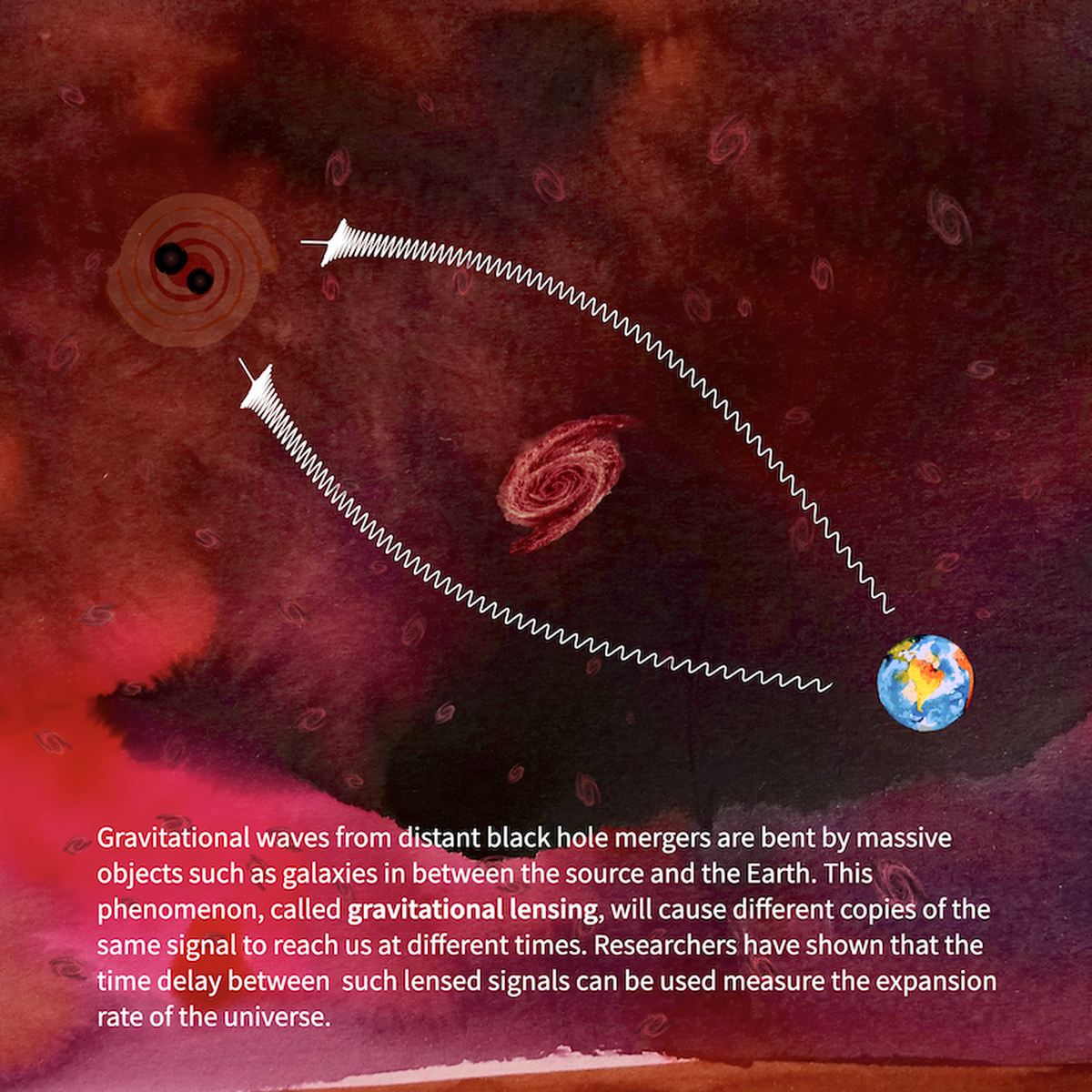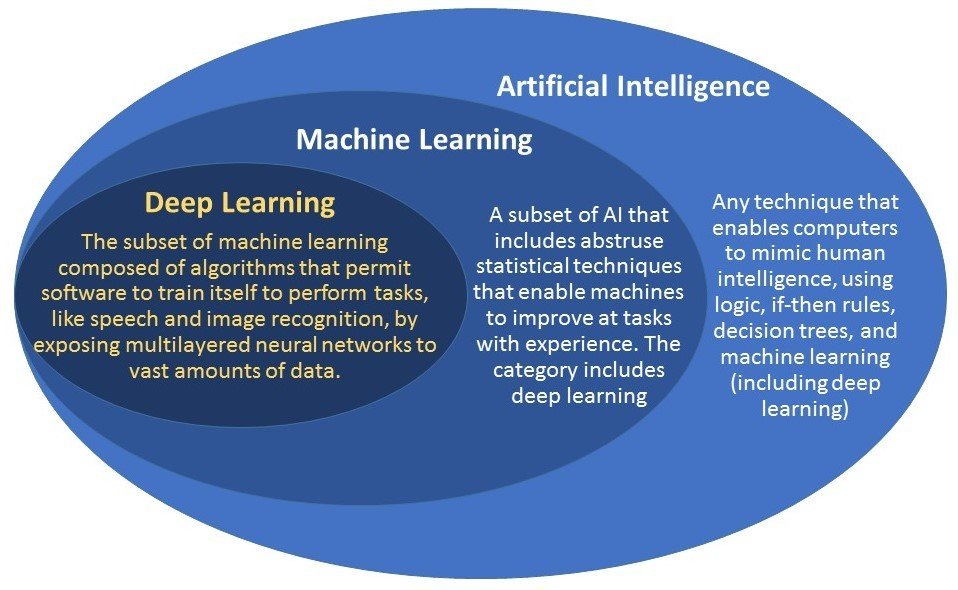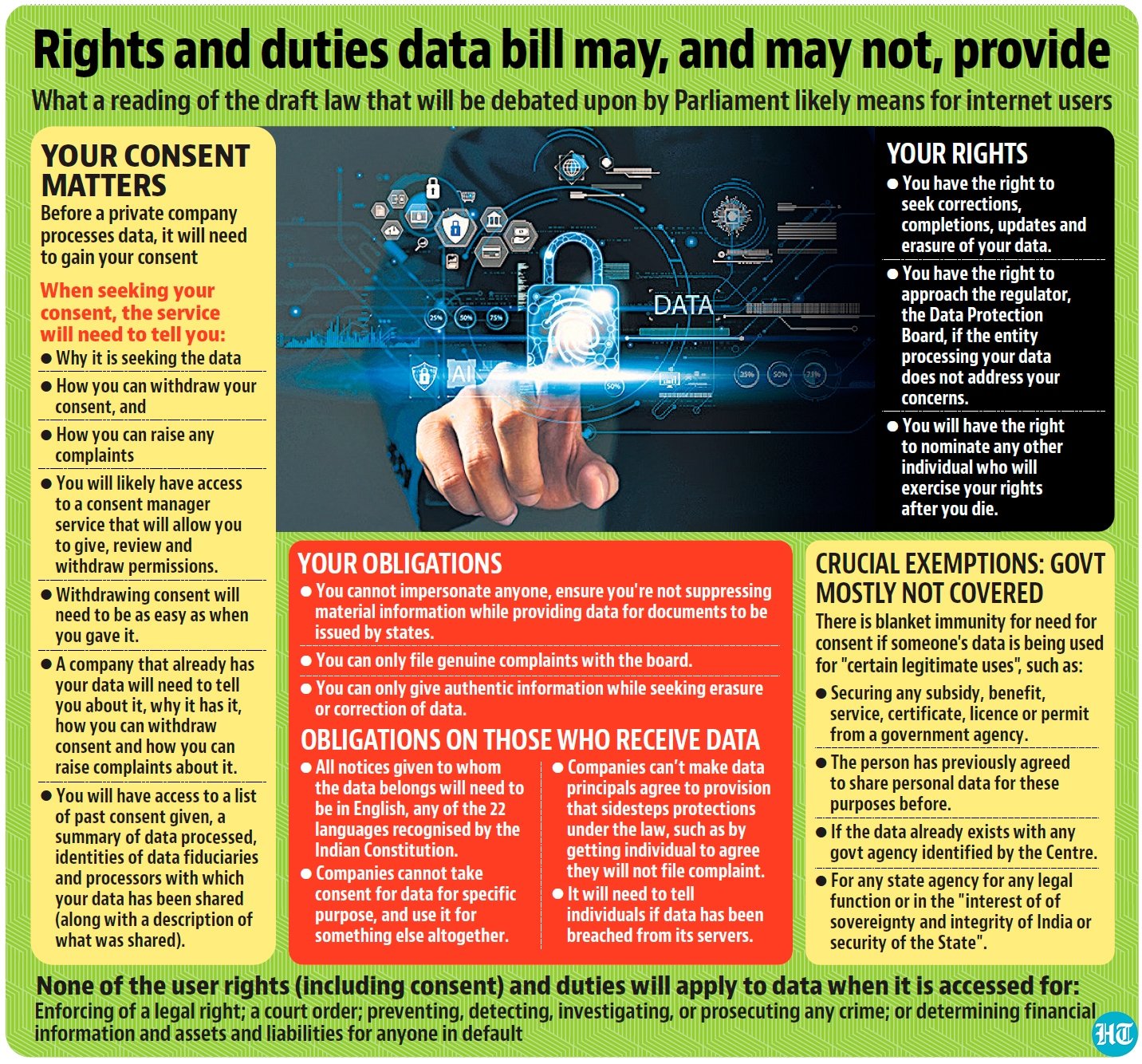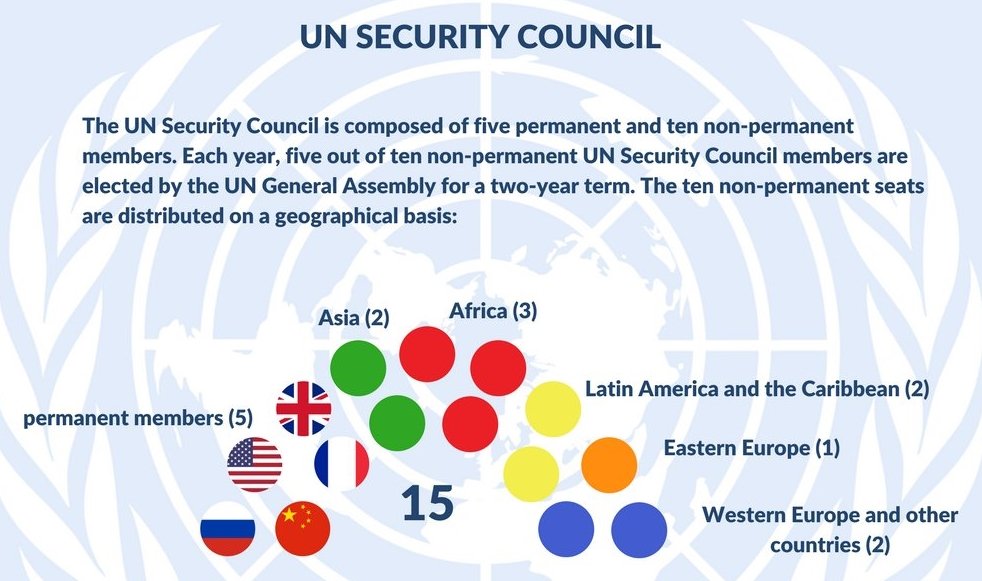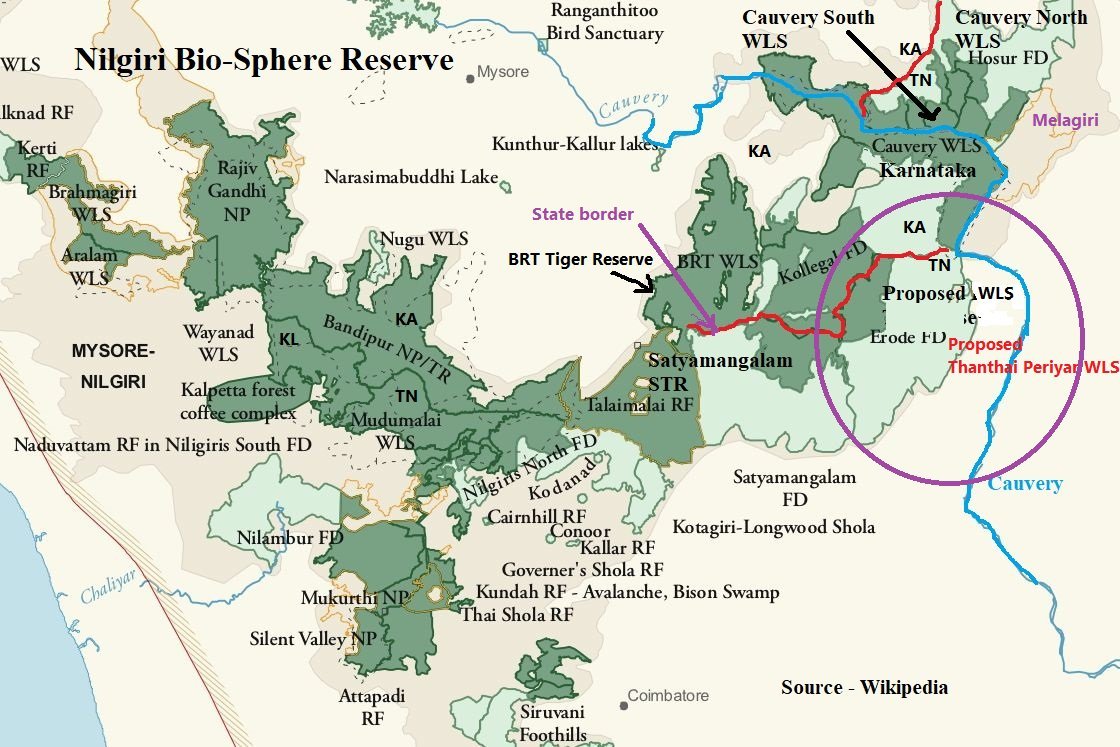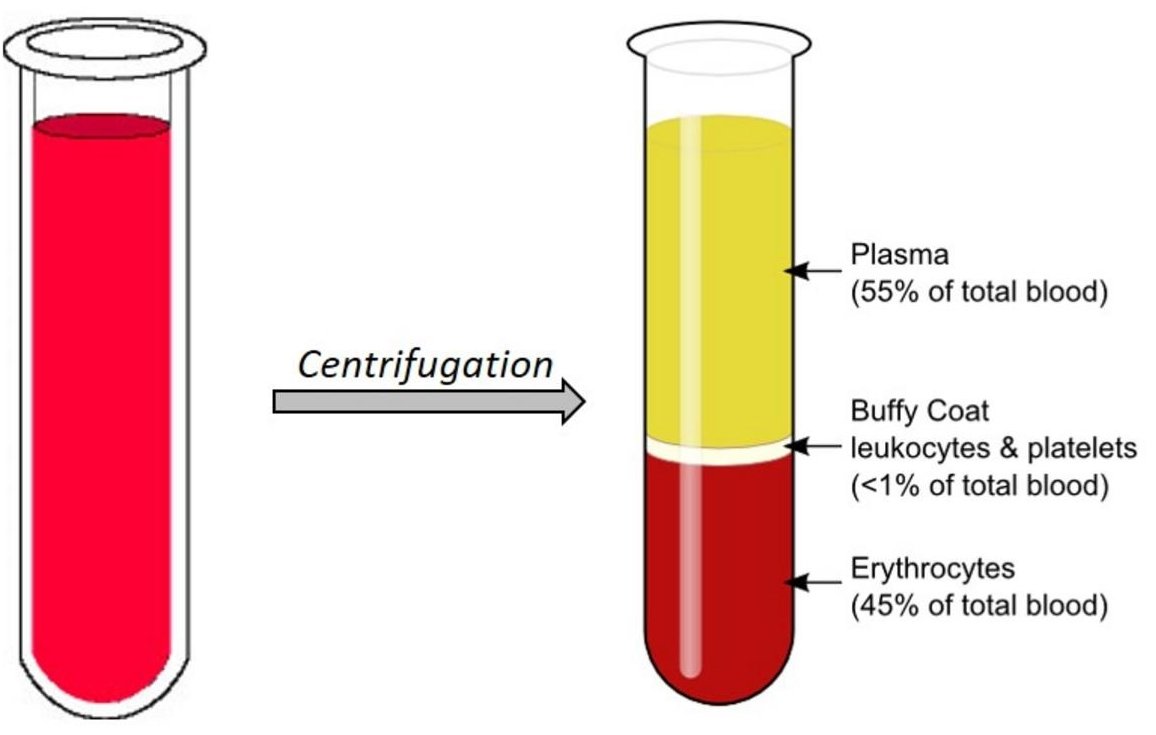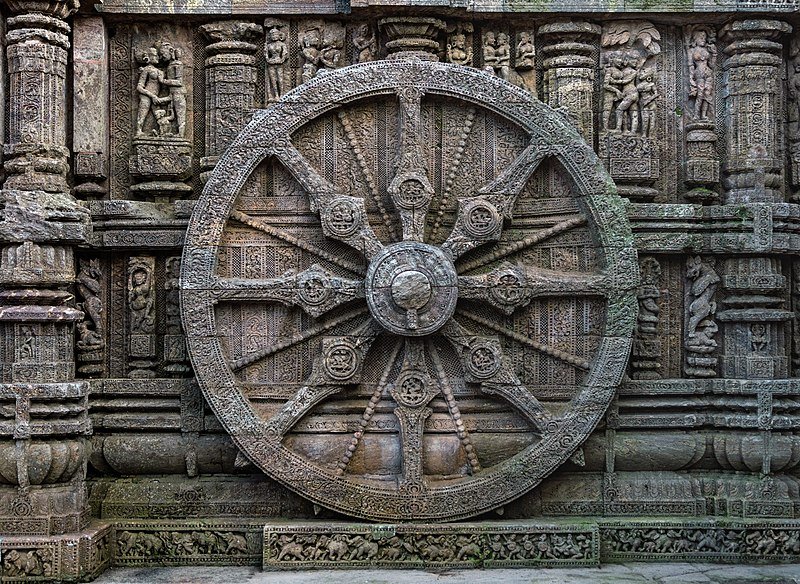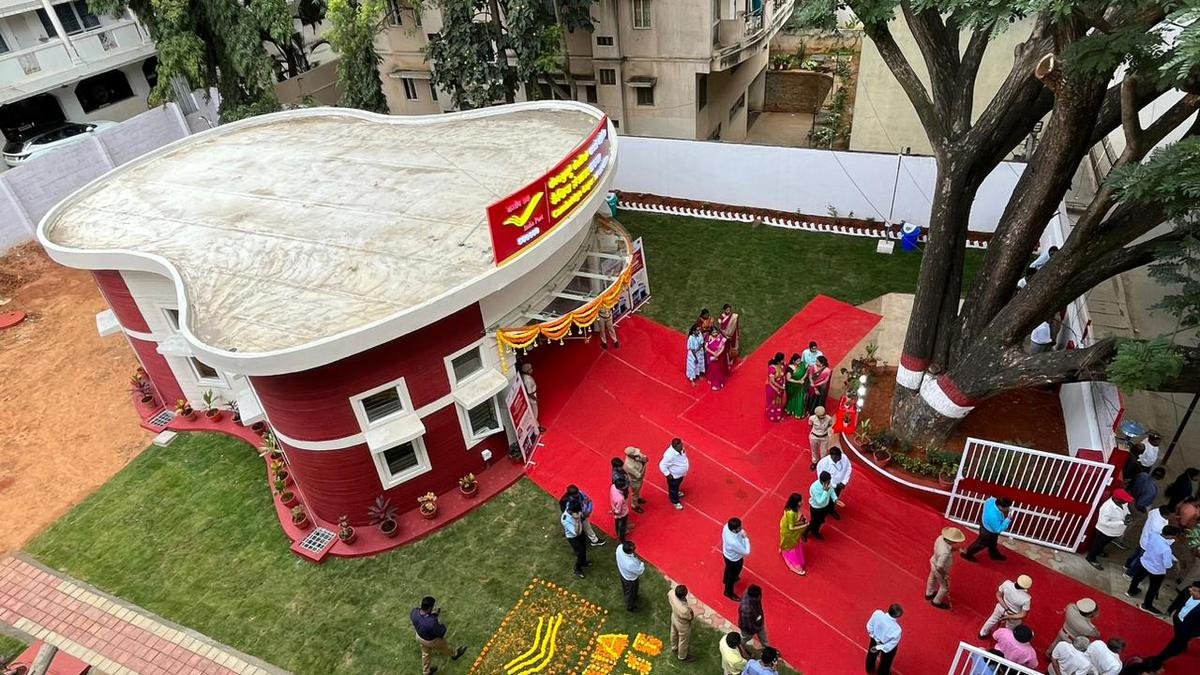
Current Affairs December 16, 2023: Impeachment: US vs India, National Menstrual Hygiene Policy, 2023, Sovereign Gold Bond Scheme, Sugarcane and Ethanol Blending, Impact of Media on Society, Channapatna Toys, Tourism Sector in India
Subscribers of "Current Affairs" course can Download Daily Current Affairs in PDF/DOC
Subscribe to Never Miss an Important Update! Assured Discounts on New Products!
Must Join PMF IAS Telegram Channel & PMF IAS History Telegram Channel
{GS1 – A&C – Art} Channapatna Toys
- Context (TH): Channapatna toys have become part of children’s academic activities in Afghanistan.
- Channapatna toys are a particular form of wooden toys and dolls manufactured in Channapatna town in the Ramanagara district of Karnataka.
- Channapatna is also known as Gombegala Ooru (toy-town).
History
- The toys have a rich history that dates back to the time of the Wodeyar dynasty in the 18th century.
- The craft is said to have been introduced to the region by Persian artisans.
Features
- These toys are handcrafted using a unique technique called “lac-turnery.”
- Craftsmen use a lathe to shape softwood, usually Indian ivory wood or Aale mara (Wrightia tinctoria), into various forms. However, nowadays, sandalwood and mango wood are also used.
- They are also painted in organic colours extracted from vegetables and plants and natural dyes, making the Channapatna Toys 100% chemical-free.
- It received a Geographical Indication (GI) tag in 2005.
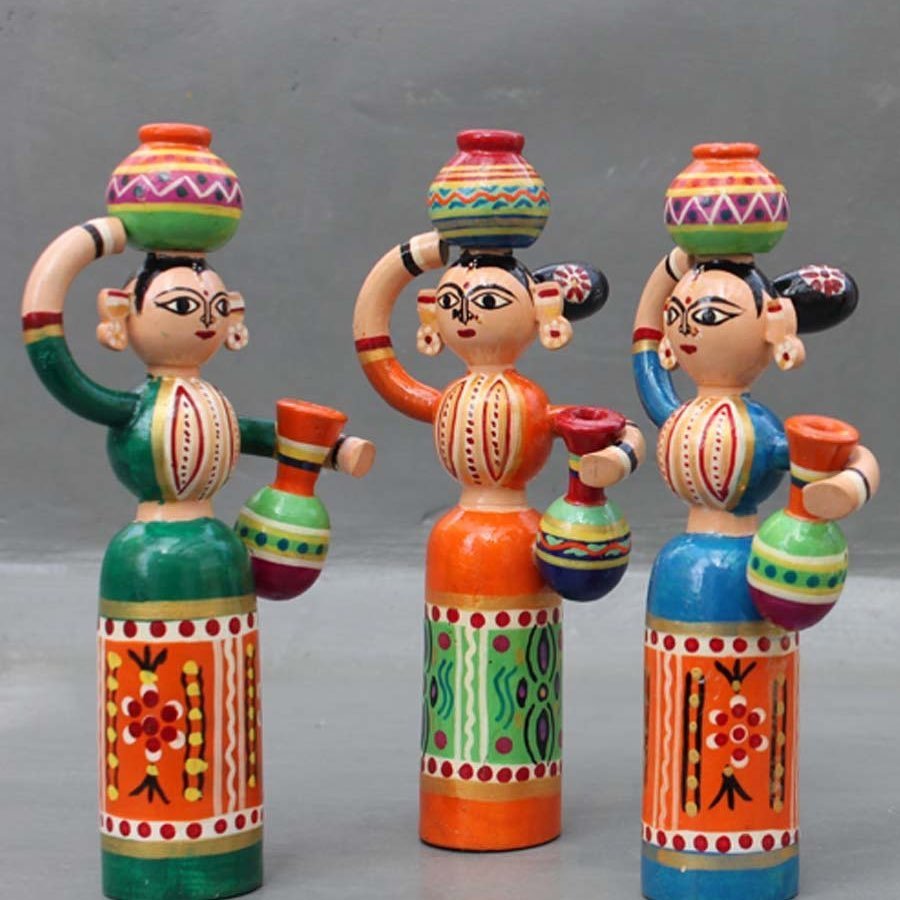
{{GS1 – IS – Issues} Impact of Media on Society
- Introduction: Media refers to the communication channels or platforms that disseminate information, entertainment, news, and messages to a large audience.
- It encompasses a broad spectrum of communication tools and technologies that facilitate mass content transmission.
Positive Impacts of Media on Society
- Information Dissemination and Awareness.
- Societal Connectivity and Globalization: Connectivity breaks down geographical barriers, allowing individuals from diverse backgrounds to engage, exchange ideas, and collaborate, fostering a sense of global citizenship and shared identity.
- Formation of Collective Identities and Cultures: Media representations of various social groups contribute to constructing shared identities and values within societies, promoting solidarity and a sense of belonging.
- Influence on Social Behavior and Norms which serve as a catalyst for positive change by promoting progressive social norms, challenging stereotypes, and fostering acceptance of diversity and inclusivity.
- Empowerment and Social Change: It empowers individuals and communities to raise awareness about social injustices, mobilize support, and catalyze societal change, contributing to a more equitable society.
- Cultural Exchange: Media showcases diverse cultures, traditions, and perspectives thereby promoting cultural appreciation, mutual respect, mitigating ethnocentrism and fostering tolerance.
Negative Impacts of Media on Society
- Misinformation and Dissemination of Falsehoods contribute to decline in trust in credible sources, polarization, and confusion, hindering informed decision-making and exacerbating societal divisions.
- Reinforcement of Stereotypes and Social Inequalities: This reinforces existing inequalities, marginalizes certain groups, and contributes to prejudice, discrimination, and social stratification.
- Normalization of harmful behaviours, substance abuse, or unrealistic beauty standards.
- Cyberbullying and Online Harassment: This negatively impacts mental health, contributes to social isolation, and undermines individuals’ sense of safety and well-being in online spaces.
- Influence on Consumerism and Materialism fostering culture of excessive consumption, creating a cycle of dissatisfaction and contributing to environmental degradation and economic disparities.
- Erosion of privacy and data security concerns and potential manipulation of individuals’ choices and behaviours.
- Distraction and reduced real-life interactions contributing to social isolation, diminished interpersonal skills, and a lack of community engagement.
Way Forward
- Thus, it emphasizes the need for critical media literacy, responsible consumption, and ethical media practices to mitigate the adverse effects of media on society.
{GS2 – IR – UN} Tax Inspectors Without Borders
- Context (PIB | ET): Tax Inspectors Without Borders (TIWB) launched a programme in Saint Lucia.
- India has been chosen as the Partner Administration, contributing Tax Experts to the programme.
- TIWB is a joint initiative of the UNDP and the OECD.
- It supports countries in building tax audit capacity.
- It complements global initiatives to enhance tax cooperation, aiding developing countries.
United Nations Development Programme (UNDP)
|
Organisation for Economic Cooperation and Development (OECD)
|
Saint Lucia (Prelims, Places In News)
|
{GS2 – MoP&NG – Policy} Sugarcane and Ethanol Blending
- It permitted sugarcane juice and B-heavy molasses (by-product of sugar) for green fuel production but limited sugar diversion to 17 lakh tonnes.
- For now, the capping will be in place for the 2023-24 supply year that ends in October next year.
Ethanol
- Ethanol (ethyl or grain alcohol) is a biofuel produced by yeast fermentation of sugars or starches.
- The hydration of ethylene can also produce it.
- It is a volatile, flammable, colourless liquid with a pungent taste and odour.
- It is commonly used as a recreational beverage, a fuel source, a solvent, and an industrial feedstock.
- Ethanol is 99.9% pure alcohol that can be blended with petrol.
Why is the Government so Focused on Ethanol-blending?
- Earlier, the demand for ethanol was from potable liquor and chemicals companies.
- But now ethanol blending is on the top priority list of the government. The reasons for this are:
- Environment friendliness of ethanol
- Reduce reliance on oil imports
- Cheaper than petrol
- Consequently, sugar/sugarcane started getting diverted for ethanol production in the past few years.
- In addition to sugarcane, India is establishing modern technology-based ethanol plants to convert agricultural waste/surplus into ethanol.
Ethanol Blending Programme (EBP)
- The EBP programme was launched in 2003 with multiple objectives, including:
- Reducing import dependence
- Savings in foreign exchange
- Providing a boost to the domestic agriculture sector
- Associated environmental benefits.
- Under EBP, India aims to blend 20% ethanol in petrol (E20) by 2025.
Increase in Ethanol Blending
- All-India average blending of ethanol in petrol has risen from 1.6% in 2013-14 to 11.8% in 2022-23.
- Ethanol blending in petrol has risen due to feedstock diversification.
Feedstock of India’s Ethanol Blending
- Under the National Policy on Biofuels 2018, the GoI allowed the conversion of B-Heavy molasses (a by-product of sugar), sugarcane juice and damaged food grains (DFG) to produce ethanol.
- This began differentiated ethanol pricing based on raw material/feedstock.
- The move enabled:
- A reliable supply of feedstocks
- Price stability for farmers
- Moreover, in 2020, maize was introduced for ethanol production.
|
|

Challenges to India’s Ethanol Policy
- High dependence on sugarcane, which is water-intensive. Thus, a weak monsoon or erratic rainfall poses a great threat to the industry.
- Shortage of sugar for consumption
- Lower calorific value: Pure ethanol has a lower calorific value than petrol, leading to an inverse correlation between vehicle mileage and the ethanol blend percentage.
- Vehicle health: Using ethanol-mixed petrol can lead to corrosion and rust in the fuel tank as it has high polarity and moisture affinity.
Way Ahead
- Increase grains as feedstock: The successful implementation of the EBP programme needs 50% ethanol to be produced through grain-based distilleries.
- Increase maize as feedstock: Maize-based ethanol is more economical and water-efficient than sugarcane.
- Dual feedstock capability plants: Setting up dual feed (molasses or grain) ethanol plants.
- Policy support: Agriculture policies supporting ethanol-producing crops.
Biogas
|
||||||||||||||||||||||||
{GS2 – Policy – IC – Judiciary} eSewa Kendras
- Context (PIB): 875 eSewa Kendras have been established for District Courts nationwide.
- e-Seva Kendras are established under the eCourts Mission Mode Project in the High Courts and District Court in each State on a pilot basis.
- They are designed to function as a single-point destination for providing legal help and support to regular people involved in lawsuits and to lawyers.
- They allow individuals to get updates on the cases and obtain copies of court judgements and directives.
- It also offers guidance for submitting legal cases electronically.
- Significance: It will advance the right to access the legal system and the right to justice.
e-Courts Project
- It is one of the National e- Governance projects being implemented in the District and Subordinate Courts since 2007.
- Monitored By: Department of Justice, Ministry of Law and Justice.
- Objective: To provide designated services to litigants, lawyers and the judiciary by universal computerisation of district and subordinate courts and enhancement of ICT enablement of the justice system.
{GS2 – Polity – IC – President} Impeachment: US vs India
- Context (TH): The USA House of Representatives voted to formally open an impeachment inquiry into the President.
- Impeachment is the act or process of formally removing a public official.
- None of the US Presidents have been impeached officially by both the houses of the US Congress.
- Some have faced the charge and have been officially impeached by one house.
|
Impeachment in USA vs India
| Basis of Distinction |
USA |
India |
| Applicability | Following are subject to impeachment:
|
Only President (Article 61 of IC) |
| Grounds | Treason, Bribery, other high crimes or misdemeanours | Violation of the IC |
| Process |
|
As a result of the investigation, if a resolution is passed by a majority of two-thirds of the total membership of the House, the President is removed from office |
| Consequences | If removed from office, the President cannot hold the elected office again. | The President stands impeached. |
{GS2 – Vulnerable Sections – Women} National Menstrual Hygiene Policy, 2023
- Context (TH): The Centre’s Draft Menstrual Hygiene Policy was recently hosted online for comments from the public and experts.
Objectives of the Policy
- To ensure that menstruating women and girls have access to safe, hygienic and quality menstrual products and sanitation facilities.
- To create an enabling environment for people, including women, girls, men and boys, to have access to correct information on menstruation.
- To address myths, stigma and gender issues around menstruation.
- To coordinate with different Central Government Ministries, States/ UTs and relevant stakeholders and sectors.
- To create a ‘menstrual-friendly environment’ in all settings, including homes, schools/ educational institutions, workplaces and public spaces.
- To foster innovative practices with social entrepreneurs and the private sector.
- To strengthen environmentally sustainable menstrual waste disposal.
Key Principles of the Policy
- Access and Affordability: Improving access to safe menstrual hygiene products and to reduce the financial burden of menstruation on individuals and families, particularly for those in low-income communities and marginalized groups.
- Equity: Prioritize equity to enable all menstruating individuals, regardless of their socioeconomic status and geographical location, to have equal opportunities to access and manage their menstruation in a safe and hygienic way.
- Address disparities and barriers that prevent certain groups from accessing required menstrual hygiene products, resources and information.
- Inclusivity: All women and adolescent girls, persons with disabilities, ethnic groups, minorities, trans and nonbinary populations, vulnerable populations and specially identified groups will be specifically focused on.
- The policy also targets men and boys at the family and community level through awareness programs to strengthen men’s roles and build a conducive environment.
{GS3 – Envi – CC} Cascading Effect in Arctic
- Context (IE | DTE): The National Oceanic and Atmospheric Administration’s (NOAA) annual Arctic Report Card of 2023 was released recently.
- The 2023 summer was the warmest on record in the Arctic, which, due to climate change, has warmed nearly four times faster than the globe since 1979.
Consequences of the Soaring Temperatures in the Arctic
- Thawing of subsea permafrost: Subsea permafrost is essentially frozen soil beneath the seabed that contains organic matter. Its thawing will release a huge amount of greenhouse gases stored in it.
- Food insecurity: Decline in fish production due to the impact of climate change on freshwater bodies and marine ecosystems.
- Raging wildfires: 40% of Canada, considered Arctic, is among the worst wildfire-affected regions.
- Severe flooding: Rising temperatures have led to dramatic thinning of the Mendenhall Glacier, leading to unprecedented flooding.
- Greenland ice sheet melting: It is the second-largest contributor to sea-level rise.
{GS3 – Envi – Species} Scimitar-Horned Oryx
- Context (BBC): Scimitar-horned oryx returns to the wild after 23-year extinction.
- The International Union for Conservation of Nature (IUCN) has now downgraded its classification from ‘Extinct in the Wild’ to ‘Endangered’.
- Reasons for extinction: Due to extended periods of drought and rampant hunting in the 1980s.
- The scimitar-horned oryx has improved its status due to both in-situ and ex-situ conservation.
- Scimitar-Horned Oryx (or Sahara Oryx) is a majestic antelope species.
- Distribution: It is found in North Africa.
- Habitat: It inhabits desert, savanna, and scrubland.
- Threat: Agriculture, climate change, hunting, invasive species.
- Conservation status: IUCN: EN

{GS3 – IE – Industry} Tourism Sector in India
- Context (PIB): The Ministry of Tourism conducts training programme to strengthen nature tourism.
Significance of the Tourism Sector
Economic Development
- Contribution to GDP: Contributes 7% to India’s GDP, making India 8th largest country in terms of contribution to travel & tourism GDP.
- Domestic travel market accounts for >85% of the sector’s contribution to GDP.
- Employment generation: It accounts for about 15% of the total employment in the country.
- Multiplier effect: It has ‘positive spillover effects’ in other sectors such as food & catering, Hotels & restaurants, real estate, transportation, etc.
- Foreign exchange: It has a positive impact on the Balance of Payment as Tourism is the third largest foreign exchange earner for India.
Social Development
- Inclusive growth: The industry creates economic activity in fragile and remote rural, tribal & hill areas with relatively poor infrastructure.
- Unlocking the value of cultural heritage and ecological sites.
- National unity: Inter-cultural exchanges help in spreading new ideas, and facilitate building tolerance and acceptance for diversity which has helped build social capital in India.
- Strategic Diplomacy tool: Act as an enabler of better bilateral relations, people-to-people connect, creating sustainable “dependency bonds” to ensure peace.
Challenges Faced by the Sector
- Lack of proper infrastructure such as air, rail, road, internet, hospitality, health/sanitation facilities at various tourist destinations.
- Governance Challenges: Lack of guidelines for tourists, poorly regulated health & hygiene, ill- managed Tourist information centers, cumbersome visa regulations, etc.
- Multiplicity of taxes across the entire industry value chain, from tour operators, transporters, airline industry to hotels, making tourism an expensive adventure in India.
- Unskilled human resources: Lack of manpower, lack of relevant skills, for eg. limited number of multi-lingual trained guides.
- Safety of tourists: Instances of crimes against tourists (especially Women) such as theft, duping, etc.
- Low international tourist footfall: Only 1.2% share in the world’s International Tourist Arrivals (ITA).
Way Forward
- Improve connectivity to remote tourist destinations to encourage exploration of lesser-known places.
- Provide training programs for those involved in the tourism industry to enhance service quality.
- Streamline regulatory processes to make it easier for businesses to operate in the tourism industry.
- Enhance online presence through social media, travel websites, and virtual tours.
GoI Initiatives for Tourism Sector
- Digital Initiatives: e–Visa facility, Web-based E-Ticketing, National Integrated Database of Hospitality Industry (NIDHI), Swachh Paryatan Mobile App.
- Draft National Strategy for 4 sub sectors: Rural, Sustainable, Health & Wellness, and MICE Tourism.
- Boosting Tourist Place Attractiveness: Swadesh Darshan, PRASAD scheme, HRIDAY, Paryatan Parv etc.
- Branding & marketing initiatives such as India Tourism Mart, Incredible India! & Athiti Devo Bhava.
{GS3 – IE – RBI} Sovereign Gold Bond Scheme
- Context (PIB): The government has notified that Sovereign Gold Bonds 2023-24 (Series III) will be available for subscription from December 18 to 22, 2023.
- Sovereign Gold Bond Scheme (SGB) is a government initiative in India, launched in 2015 under the Gold Monetisation Scheme.
- The RBI issues these bonds on behalf of the Government of India.
Main Objectives of the Scheme
- To provide an alternative to holding physical gold.
- To reduce the demand for physical gold.
- To invest a part of the Physical Gold Bars and coins that are purchased into financial savings in the form of gold bonds.
Key Features of the Scheme
- The bonds are denominated in multiples of gram(s) of gold with a basic unit of 1 gram.
- Tenure: 8 years with an exit option in the 5th, 6th, and 7th years.
- Minimum permissible investment is 1 gram of gold.
- Maximum limit of subscribed shall be 4 KG for individuals, 4 Kg for HUF and 20 Kg for trusts.
- The investors are compensated at a fixed rate of 2.50 percent per annum payable semi-annually on the nominal value.
- SGBs can be used as collateral for loans.
- The interest on Gold Bonds shall be taxable as per the provisions of the Income Tax Act, 1961.
- The RBI/Government doesn’t promise to give you physical gold upon maturity. Instead, they promise to give you the equivalent value in rupees based on the latest gold price at that time.
{Prelims – Places In News – India} Aves Island
- Context (DH | TNIE): To promote tourism in the A&N Islands, the UT administration has decided to open uninhabited Aves Island in the North and Middle Andaman districts for travellers.
- Also known as Coconut Island, this uninhabited Island has no accommodation facilities.
- The administration has proposed a five-star eco-tourism resort in Aves Island in PPP mode.




![PMF IAS Environment for UPSC 2022-23 [paperback] PMF IAS [Nov 30, 2021]…](https://pmfias.b-cdn.net/wp-content/uploads/2024/04/pmfiasenvironmentforupsc2022-23paperbackpmfiasnov302021.jpg)




